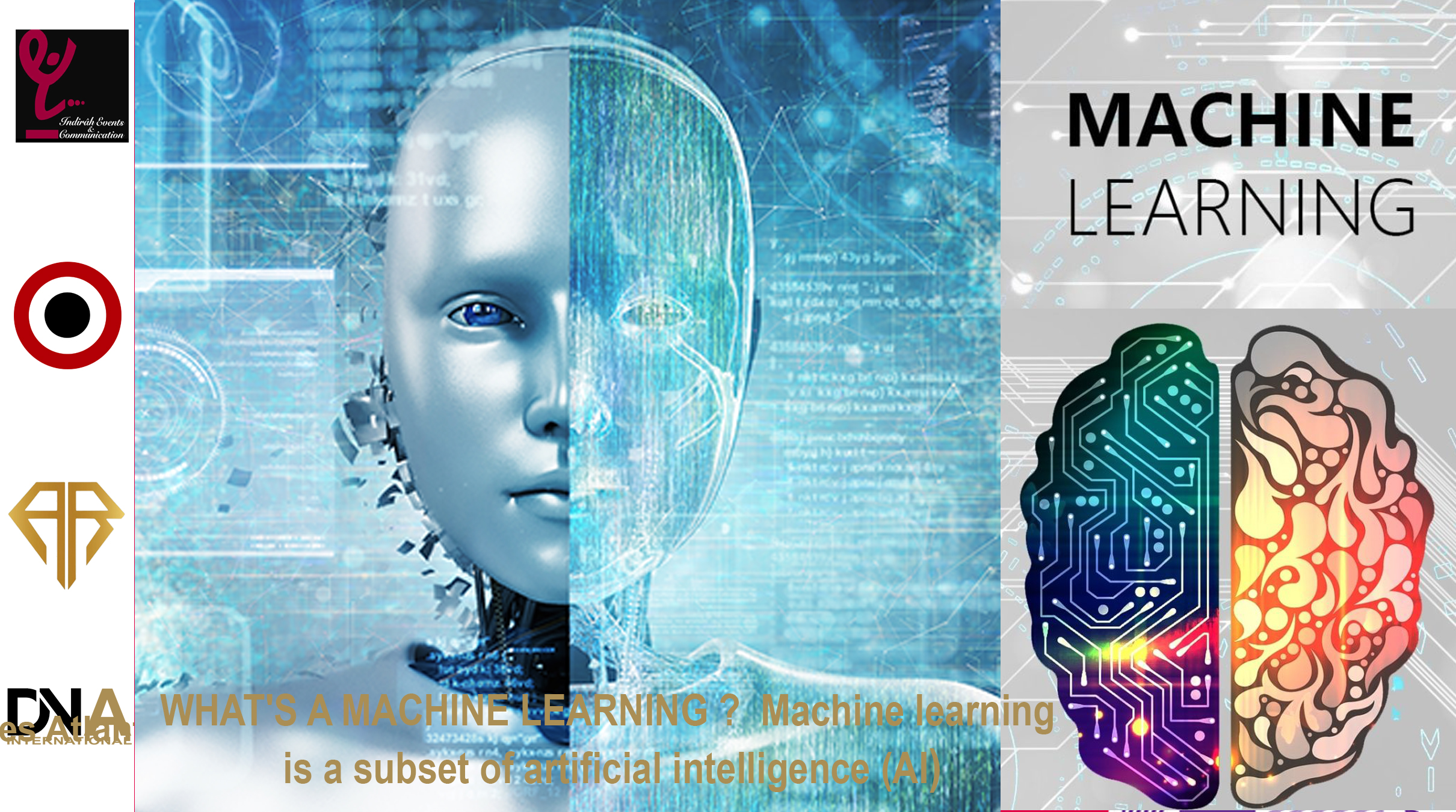WHAT’S A MACHINE LEARNING ? Machine learning is a subset of artificial intelligence (AI)
Date : July 23 2023
Location : Worldwide
Machine learning and artificial intelligence (AI)
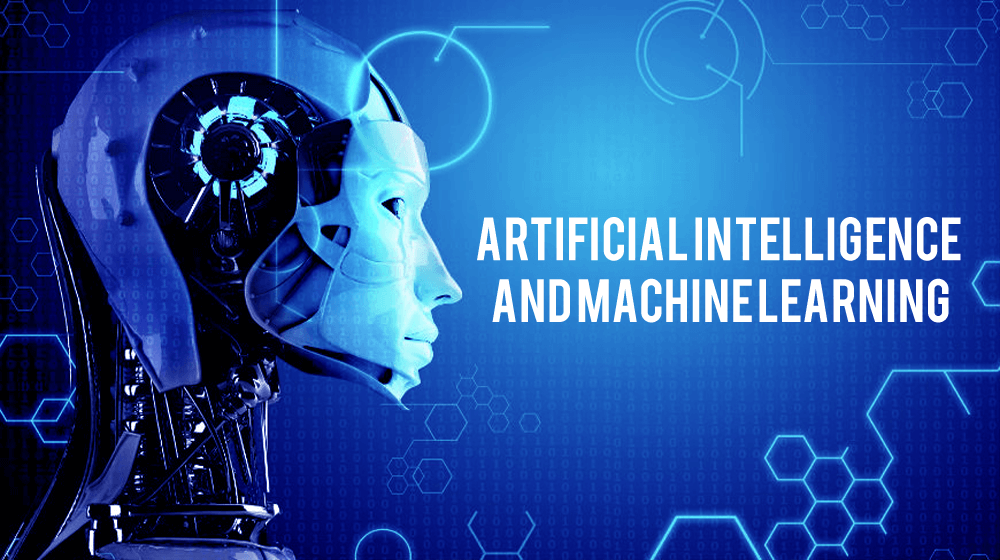
Machine learning and artificial intelligence (AI) are related concepts but not interchangeable terms. Let’s explore the difference between the two:
- Artificial Intelligence (AI): Artificial Intelligence is a broad field of computer science that aims to create machines or systems that can perform tasks that typically require human intelligence. The goal of AI is to develop intelligent agents that can reason, learn from experience, understand natural language, perceive their environment, and solve complex problems. AI can be classified into two categories:
- Narrow AI (Weak AI): Narrow AI refers to AI systems that are designed to perform specific tasks or solve particular problems. These systems are specialized and focused, and they excel in their designated area but lack general intelligence.
- General AI (Strong AI): General AI, also known as strong AI, is the concept of AI systems that possess human-like intelligence and can perform any intellectual task that a human can do. This level of AI is still theoretical and has not been fully achieved yet.
- Machine Learning (ML): Machine Learning is a subset of AI that focuses on the development of algorithms and statistical models that enable computers to learn from data and improve their performance on a specific task over time. Instead of being explicitly programmed for every task, ML algorithms learn patterns and insights from data, allowing them to make predictions, identify patterns, and make decisions without explicit programming.
In essence, machine learning is a method used to achieve artificial intelligence.
It empowers AI systems by providing them with the ability to learn and adapt without being explicitly programmed for each scenario.
Machine learning algorithms can process vast amounts of data to identify patterns and relationships, which enables AI systems to improve their performance and make better decisions over time.
In summary, artificial intelligence is a broader concept that aims to create intelligent systems capable of human-like tasks, while machine learning is a specific approach within AI that uses data and algorithms to enable computers to learn and improve their performance without being explicitly programmed for each task.
Machine learning is a subset of artificial intelligence (AI) that focuses on training algorithms to learn patterns and make predictions from data without being explicitly programmed for every task. It allows machines to improve their performance over time by learning from new data.
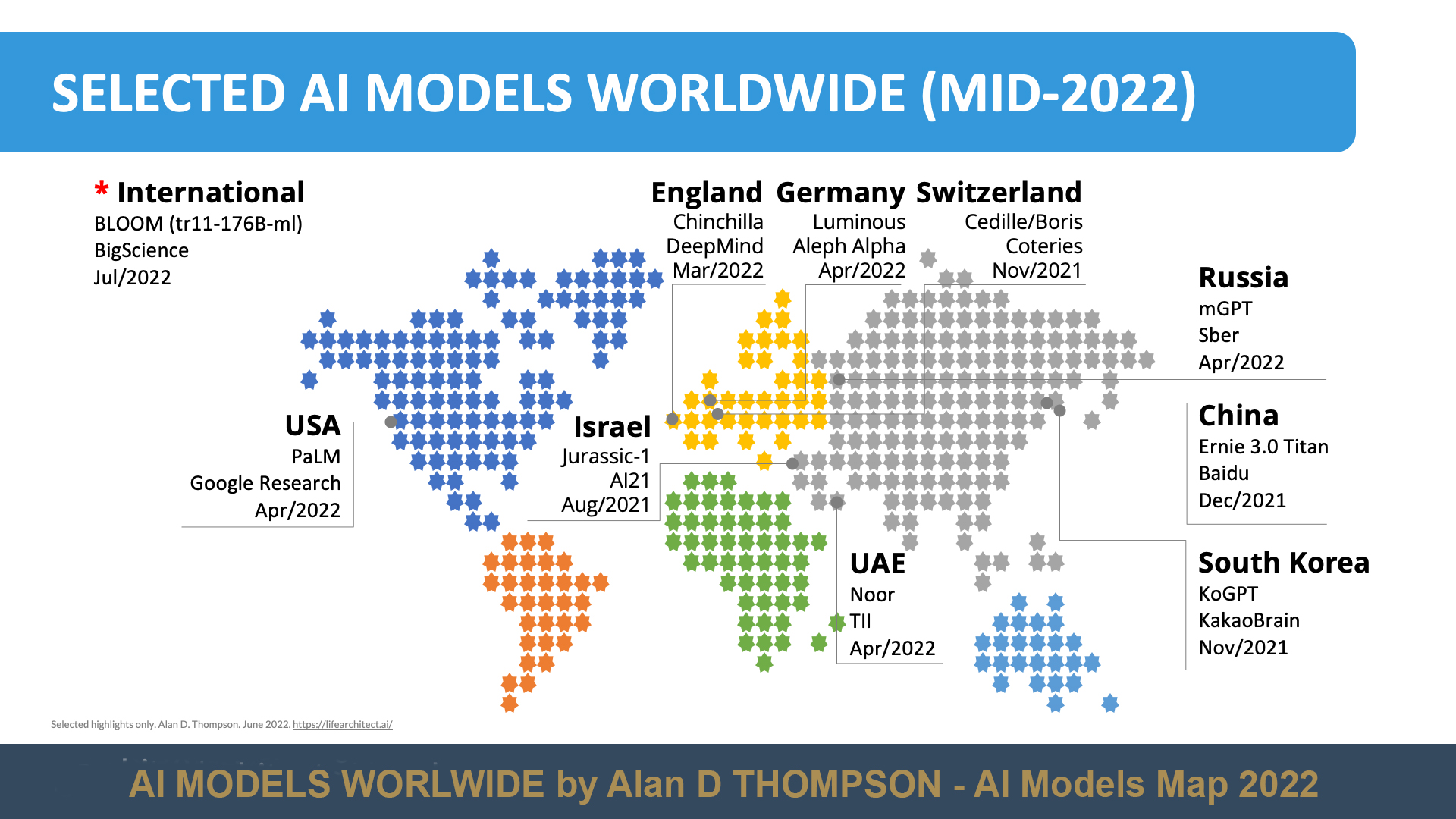
There are three main types of machine learning:
- Supervised Learning: In this type of learning, the algorithm is trained on a labeled dataset, where the correct answers are provided. The model learns to map input data to the correct output based on these labeled examples. Supervised learning is commonly used for tasks such as classification and regression.
- Unsupervised Learning: Here, the algorithm is given an unlabeled dataset and must find patterns or structures in the data on its own. Clustering and dimensionality reduction are examples of unsupervised learning tasks.
- Reinforcement Learning: In this type, the algorithm interacts with an environment and learns to make decisions based on feedback from rewards or penalties. The goal is to maximize cumulative rewards over time.
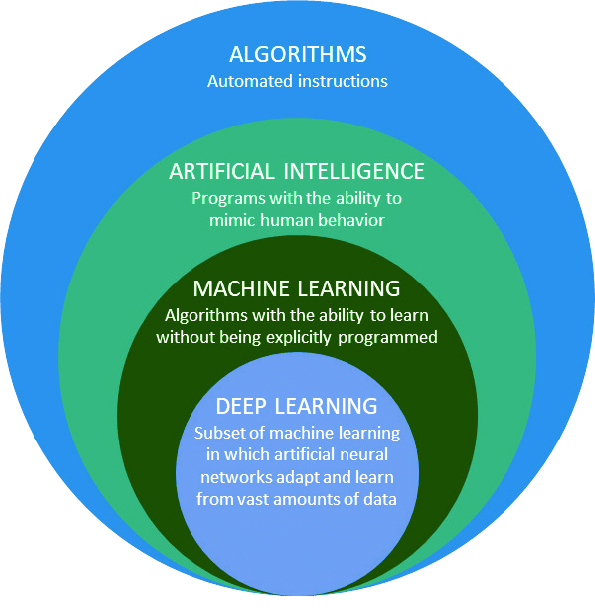
As for using my capacity as an AI language model, you can leverage AI capabilities in various ways:
- Information Retrieval: You can ask questions or seek information on various topics, and AI can provide relevant and informative answers.
- Writing Assistance: AI can help you draft documents, articles, or creative writing by generating text based on your prompts.
- Language Translation: AI can assist in translating text between different languages.
- Coding and Technical Assistance: AI can provide guidance on programming and help with code-related queries.
- Educational Support: You can use AI to study or learn about various subjects by asking questions and exploring concepts.
- Creative Projects: If you need creative ideas, AI can generate prompts or suggest approaches for artistic endeavors.
- Conversational AI: AI can engage in interactive conversations and respond to various inputs in a conversational manner.
Please keep in mind that while AI can provide useful information and assistance, AI am not a substitute for professional advice or critical decision-making.
Always verify critical information from reliable sources and consult experts for specialized advice.
If you have specific questions or tasks in mind, feel free to ask, and AI‘ll do my best to assist you!
Artificial intelligence (AI) potential impact on society to solve a variety of problems
It’s natural to have concerns or fears about artificial intelligence (AI), especially when we consider the technological advances and its potential impact on society.
However, it’s essential to understand that AI is a tool developed by humans and has no consciousness, emotions or intentions of its own.
AI is being used to solve a variety of problems and improve many aspects of our lives, including healthcare, transportation, finance, education and many others.
It can bring considerable benefits, such as automating repetitive tasks, providing medical assistance, improving weather forecasts and so on.
However, it’s important to approach AI developments with responsibility and caution to avoid potential negative effects. Some points of concern include:
Confidentiality and data protection: The increased use of AI can raise questions about personal data confidentiality and information security.
Bias and discrimination: AI algorithms may reflect biases in training data, leading to discriminatory decisions.
AI Job Loss
Job loss: AI-driven automation could potentially replace certain jobs, necessitating re-adaptation strategies for the workers concerned.
Control of AI: It is essential to ensure that AI remains under human control and that critical decisions are made by individuals.
It is therefore important to educate, supervise and regulate the use of AI to maximize its benefits while mitigating its potential risks. Responsible adoption of AI involves collaboration between scientists, policymakers, businesses and society to promote its ethical and equitable development.
In conclusion, rather than being afraid of AI, it’s better to stay informed, ask questions and help shape its use in a way that benefits humanity.
AI offers extraordinary potential for improving our quality of life, provided it is developed and used responsibly and ethically.
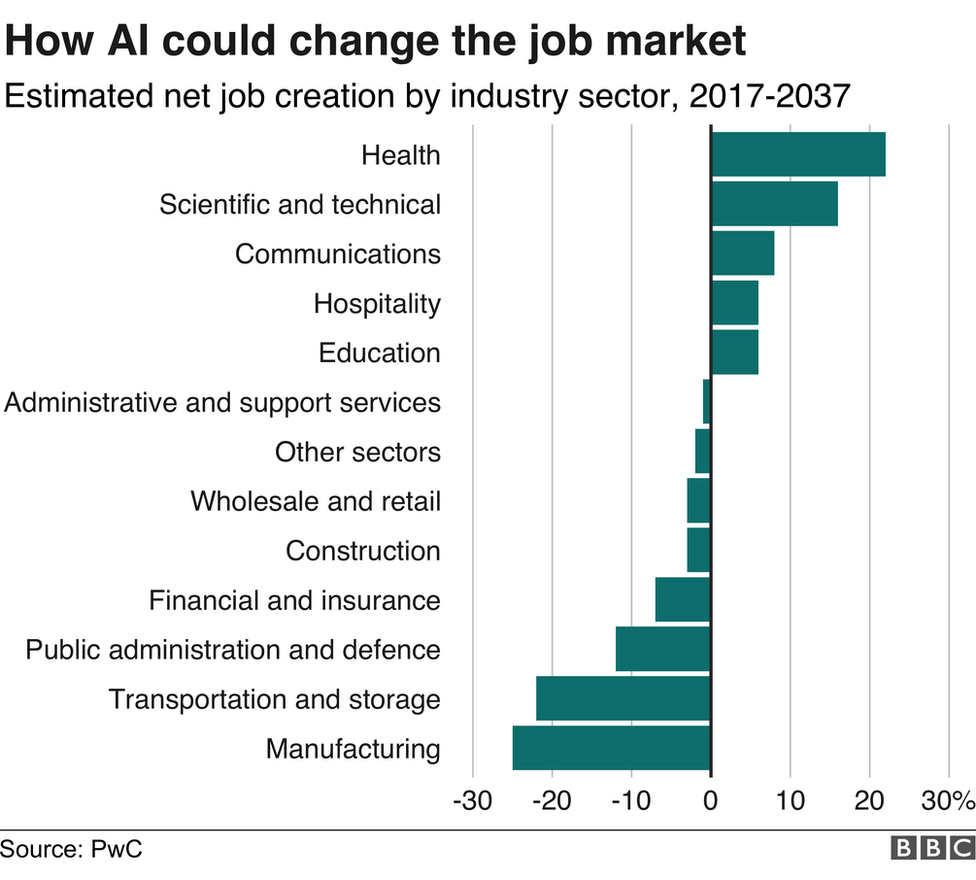
The advancement of artificial intelligence (AI) and automation
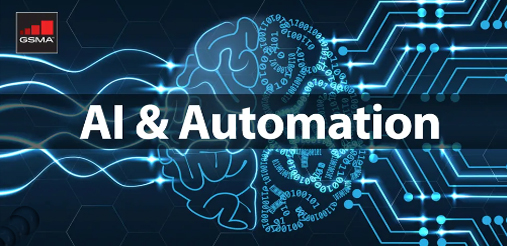
The advancement of artificial intelligence (AI) and automation has the potential to impact various industries and job sectors.
While AI can bring numerous benefits and opportunities, it also raises concerns about job displacement and changes in the workforce.
Some of the sectors and job roles that could be affected by AI include:
- Manufacturing: AI-powered robots and automation could replace certain manual tasks in manufacturing, leading to changes in production and assembly lines.
- Transportation: The rise of autonomous vehicles and drones may affect jobs in driving and delivery services.
- Retail: AI-powered chatbots and automated checkout systems could impact jobs in customer service and cashier roles.
- Data Entry and Analysis: AI can streamline data entry and analysis tasks, potentially reducing the need for manual data entry positions.
- Customer Support: AI-powered virtual assistants and chatbots are increasingly being used for customer support, which could affect traditional call center jobs.
- Banking and Finance: AI can automate financial processes, impacting roles in accounting and transaction processing.
- Healthcare: AI-powered diagnostic tools and telemedicine could influence jobs in medical imaging and certain diagnostic roles.
- Agriculture: AI-driven autonomous machinery and drones may transform certain agricultural tasks.
- Legal Services: AI can assist in legal research and document review, affecting certain paralegal and legal support positions.
- Creative Industries: AI-generated content and design tools could influence jobs in creative sectors such as writing, graphic design, and music composition.
It’s important to note that while AI may impact certain job roles, it can also create new opportunities and job openings in areas related to AI development, programming, data analysis, and AI-related research.
To address potential job displacement, it is crucial for individuals and organizations to focus on upskilling and reskilling the workforce, preparing employees for emerging roles and industries. Additionally, policymakers and businesses need to consider the ethical and societal implications of AI implementation to ensure a smooth transition and equitable distribution of benefits.
The percentage of job loss
The percentage of job loss in a modern industrialized country due to the introduction of artificial intelligence (AI) and automation depends on many factors, such as the level of AI adoption, the degree of sophistication of the technologies, the nature of the jobs involved, government policies, and the ability of workers to adapt to the changes.
Estimates vary considerably depending on studies and sources
Estimates vary considerably depending on studies and sources. Some research suggests that automation and AI could potentially affect between 10% and 30% of jobs in industrialized countries over the next few decades. Other analyses predict a more limited, if any, impact on overall employment, as AI could also create new job opportunities and stimulate economic growth.
It is essential to note that AI and automation do not necessarily replace all jobs, but they may lead to changes in the skills required for certain professions. Some jobs could be automated, while new roles will emerge in the development, maintenance and use of AI-based technologies.
To mitigate potential negative impacts on employment, it is essential to promote lifelong learning, training and the development of new skills, so that workers can adapt to technological change and seize emerging opportunities.
Government policies also play a crucial role in helping workers cope with the transition. This could include the creation of retraining programs, support for growth sectors, and the promotion of an environment conducive to innovation and job creation.
Ultimately, AI’s impact on employment will depend on how companies and governments manage this technological transition and commit to a balanced and prosperous future for the workforce.
Technological change and Automation: Re-employing people who no longer fit industrial needs
Re-employing people who no longer fit industrial needs due to technological change and automation is a crucial challenge for governments, companies and society as a whole.
Here are some strategies to help with this transition:
Training and lifelong learning: Set up training and retraining programs to enable workers to develop new skills adapted to emerging jobs. This can include vocational training, e-learning programs and on-the-job learning opportunities.
Career guidance: Offer guidance and counseling services to help workers identify transferable skills and explore new career opportunities.
Entrepreneurship support: Encourage and support workers to set up their own businesses or become self-employed in promising sectors.
Retraining programs: Develop specific programs to help workers make the transition from declining industries to growth sectors in need of manpower.
Budget required for successful retraining in relation to a country’s GDP
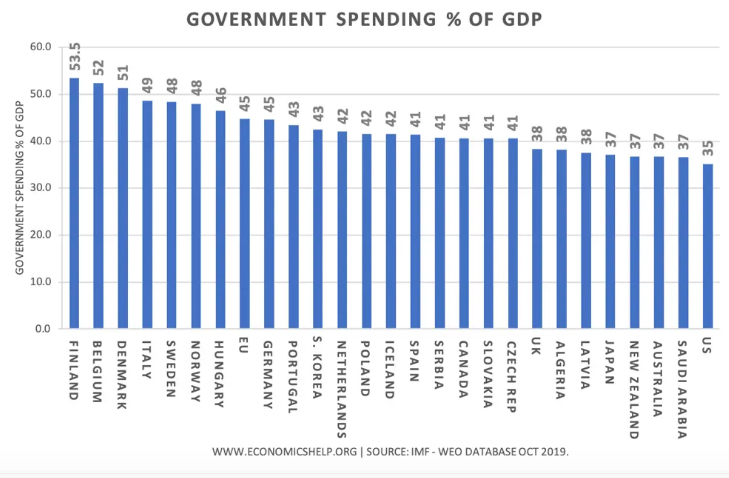
The countries with the lowest government spending as a % of GDP tend to be poor developing economies.
The one notable exception is Singapore. A wealthy economy with an unusually low level of government spending as % of GDP.
Budget Required for successful retraining in relation to a country’s GDP
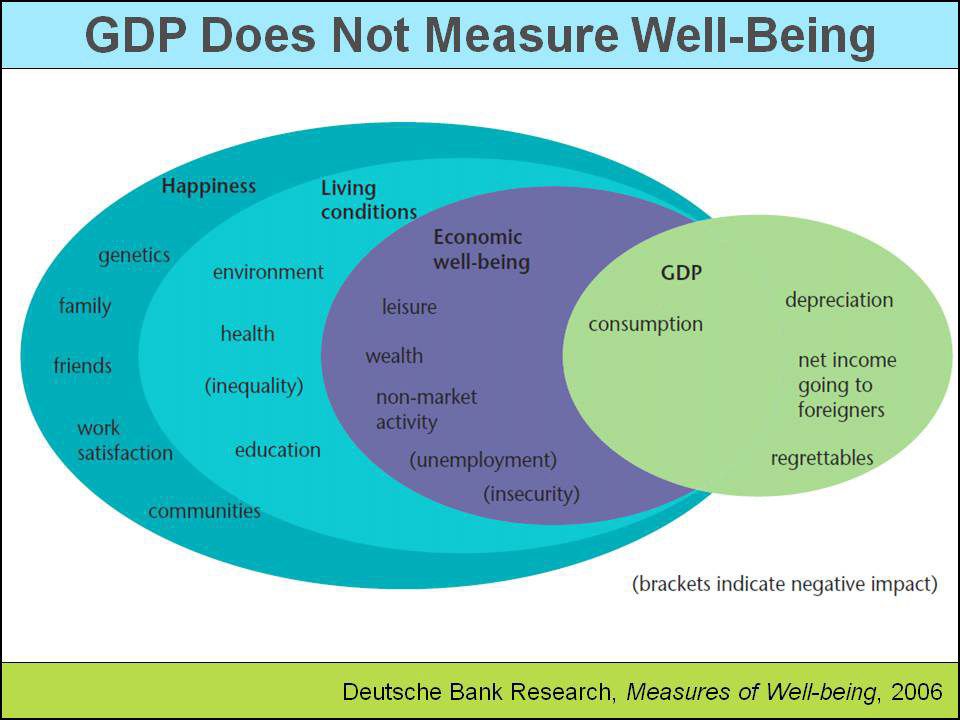
The budget required for successful retraining in relation to a country’s GDP depends on various factors, such as the level of industrial automation, the size of the workforce affected, the unemployment rate and the degree of economic competitiveness. It is difficult to give a precise figure, as each country has different circumstances and needs.
However, here are some general considerations:
Needs analysis: An essential first step is to carry out an in-depth analysis of retraining needs. This will determine the number of workers affected, the skills required for new emerging jobs and the growth sectors.
Cost assessment: Next, it is necessary to assess the costs of training, retraining, retraining and support for the workers concerned. This may include the cost of training programs, educational infrastructures and support services for workers in transition.
Public and private investment: Retraining can be financed by both public and private investment. The government can allocate financial resources to support training and education programs. Private companies can also invest in developing the skills of their workforce to meet the needs of the labor market.
As for the budget required for a country’s national education, this also varies according to numerous factors such as population size, quality of educational infrastructure, levels of education offered, educational policies, etc.
It is important to invest adequately in national education to ensure the training and skills development of the future workforce.
This includes funding for schools, universities, vocational training programs, research and development initiatives, as well as resources for teachers and students.
An adequate budget for national education is essential to improve the quality of teaching, foster innovation, encourage research and creativity, and prepare students for the Challenges of the Future, including technological and economic change.
Investment in education is essential for a country’s long-term sustainable development and economic competitiveness.
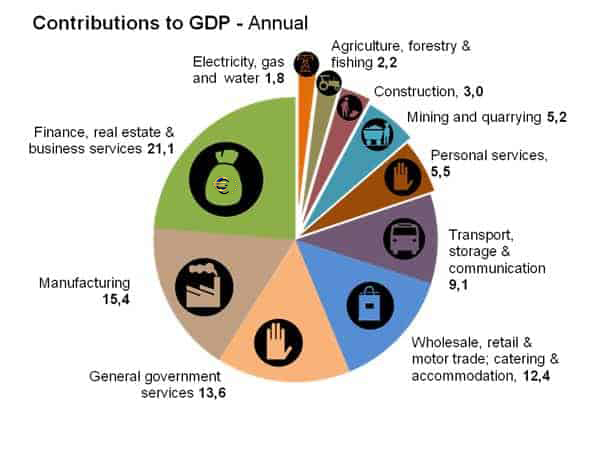
The Gross Domestic Product (GDP)
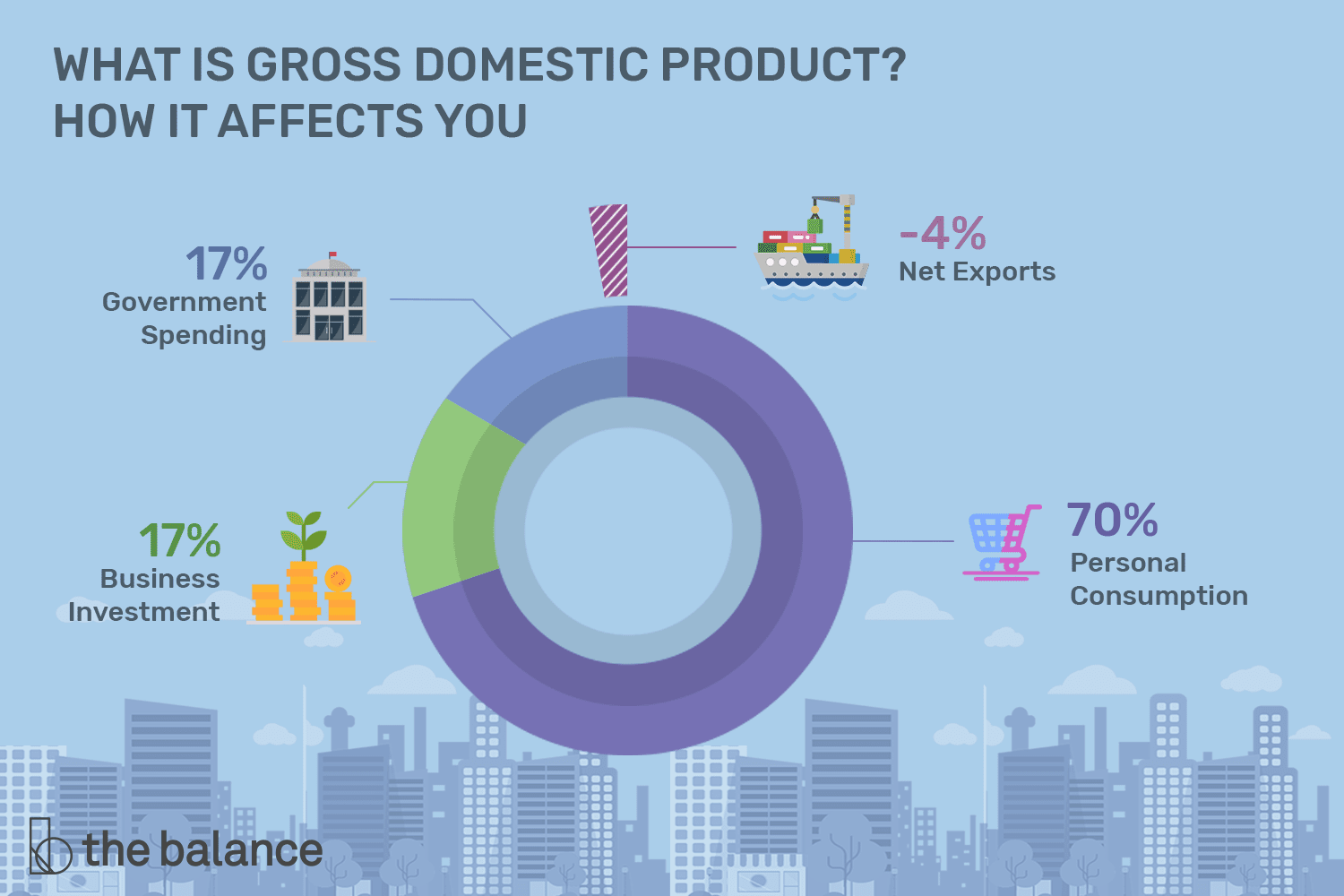
The Gross Domestic Product (GDP) is a key economic indicator that measures the total monetary value of all goods and services produced within a country’s borders in a specific time period, usually annually or quarterly. It is used to assess the economic performance and overall health of a country’s economy.
GDP can be calculated using three approaches:
- Production approach: This approach calculates GDP by summing up the value-added at each stage of production across all industries within the country.
- Income approach: This approach calculates GDP by summing up all the incomes earned by individuals and businesses within the country, including wages, profits, rents, and taxes.
- Expenditure approach: This approach calculates GDP by summing up all the expenditures made within the country, including consumption, investments, government spending, and net exports (exports minus imports).

GDP is an important economic metric because it provides insight into the overall economic activity and size of a country’s economy. It is often used to compare the economic performance of different countries, track economic growth or recession, and inform policy decisions related to economic development, trade, and fiscal policies.
However, it is important to note that GDP alone may not fully capture the well-being or overall quality of life of a country’s citizens, as it does not account for factors like income inequality, distribution of wealth, or environmental sustainability.
Other indices, such as the Human Development Index (HDI), are used to provide a more comprehensive assessment of a country’s overall development and well-being.
The Human Development Index (HDI)
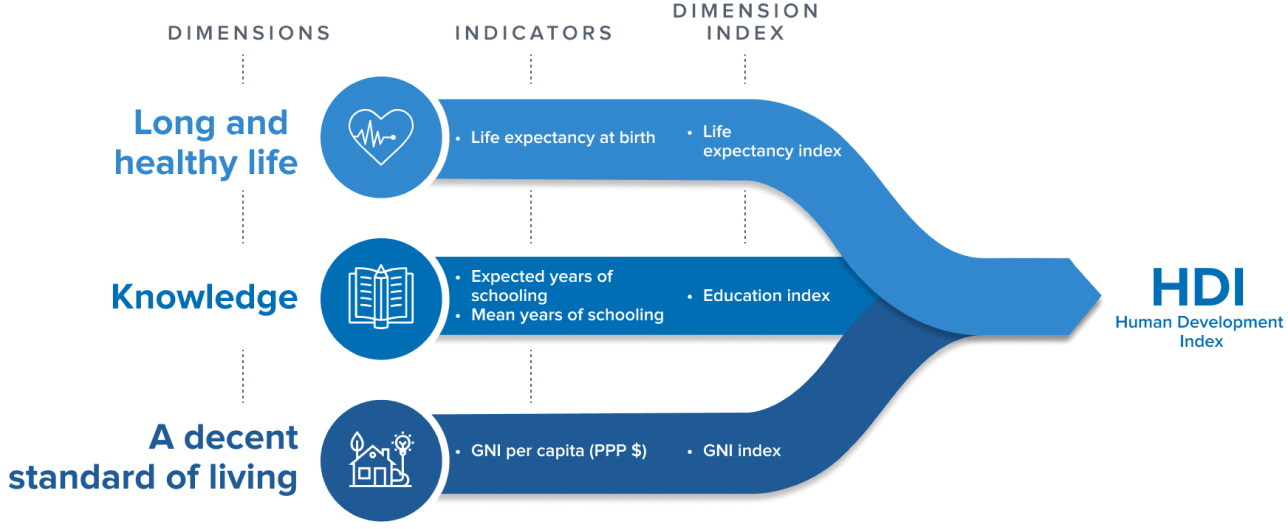
The Human Development Index (HDI) is a composite index developed by the United Nations Development Programme (UNDP) to measure and compare the overall development and well-being of countries.
It takes into account three basic dimensions of human development: health, education, and standard of living.
The HDI is calculated based on the following indicators:
- Life expectancy at birth: This indicator reflects the health dimension and measures the average number of years a newborn is expected to live, indicating the overall health and well-being of the population.
- Education (Mean years of schooling and Expected years of schooling): The education dimension is measured using two indicators. Mean years of schooling is the average number of years of education received by people aged 25 years and older, while Expected years of schooling is the average number of years of education expected for a child at the time of their entry into school.
- Gross National Income (GNI) per capita: The standard of living dimension is measured using GNI per capita, which is the total income of a country divided by its population. GNI per capita reflects the average income available to individuals in a country and is adjusted for purchasing power parity (PPP) to account for differences in the cost of living between countries.
The HDI ranges from 0 to 1, with higher values indicating higher levels of human development. Countries are categorized into four groups based on their HDI value:
- Very High Human Development (HDI greater than 0.800)
- High Human Development (HDI between 0.700 and 0.799)
- Medium Human Development (HDI between 0.550 and 0.699)
- Low Human Development (HDI less than 0.550)
The HDI is widely used as an important tool for comparing the overall development and well-being of different countries.
It provides a more comprehensive picture of a country’s development beyond just economic indicators like GDP, as it takes into account factors related to health, education, and income.
The HDI helps policymakers identify areas for improvement and formulate strategies to promote human development and well-being for all citizens.
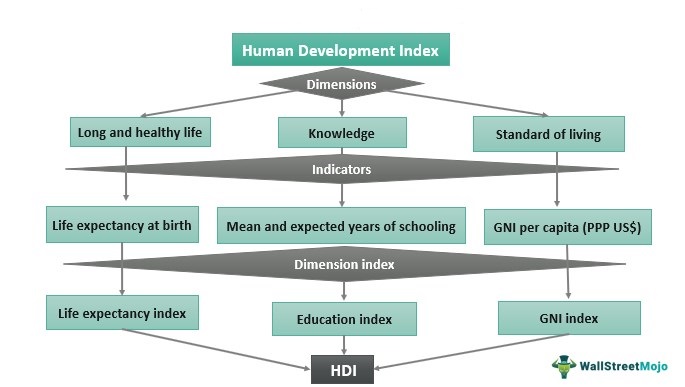
Gross National Income (GNI)
Gross National Income (GNI) is a measure that reflects the total income earned by the residents of a country, both domestically and abroad, during a specific time period, usually a year.
It is an important economic indicator used to assess the economic performance and income generated by a country’s residents, regardless of whether the income is earned within the country’s borders or from overseas activities.
GNI includes several components:
- Gross Domestic Product (GDP): The first component of GNI is the Gross Domestic Product (GDP), which represents the total monetary value of all goods and services produced within a country’s borders during a specific time period. GDP measures the economic output generated within the country and is used to assess the size and growth of the domestic economy.
- Net income from abroad: The second component of GNI accounts for the net income earned from overseas activities. This includes income earned by the country’s residents from foreign investments, businesses, employment, and other sources abroad, minus the income earned by foreign residents within the country.
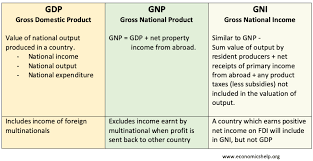
The formula for calculating GNI is as follows:
GNI = GDP + Net income from abroad
GNI is used as an indicator of a country’s economic well-being and standard of living. It provides a broader perspective on a country’s income and economic performance, taking into account both domestic economic activities and the income earned from international sources. GNI per capita is often used to assess the average income available to individuals in a country and is adjusted for purchasing power parity (PPP) to account for differences in the cost of living between countries.
GNI is an important metric for policymakers and economists, as it helps analyze a country’s economic strength, income distribution, and contribution to the global economy.
It also provides insights into a country’s level of economic development and can be used to compare the economic performance of different countries.
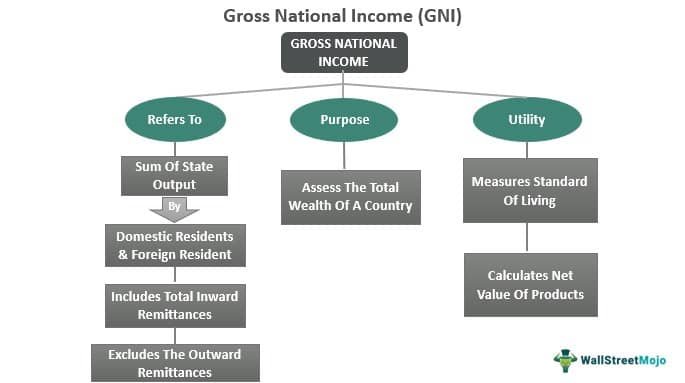
THE JOB OF THE FUTURE

The jobs of the future are evolving rapidly as a result of technological advances, economic changes and new societal trends. Here are a few fields that are likely to see strong demand for jobs in the future, as well as the appropriate training to prepare for these professions:
Information and communication technology (ICT): Careers in IT, software development, cybersecurity, artificial intelligence (AI) and machine learning are in high demand.
Training in computer science, programming and data science is essential to prepare for these professions.
Health and well-being: The healthcare sector is set for continued growth, particularly in the fields of elderly care, digital health, telemedicine and advanced medical technologies. Training in medicine, nursing, public health and biomedical sciences is important for these careers.
Renewable energies and sustainability: With the growing emphasis on sustainability and reduced environmental impact, careers related to renewable energies, energy efficiency and natural resource management should be in demand. Training in renewable energies, environmental engineering and environmental sciences is relevant to these careers.
Artificial intelligence and robotics: Careers related to AI, robotics, industrial automation and the design of autonomous systems will be expanding. Training in robotics engineering, intelligent systems design and computer science is important in this field.
Creative sector: Creative industries such as design, animation, video game development, multimedia production and digital marketing will continue to grow as media and technology evolve. Training in design, digital arts, animation and digital marketing is well-suited to these careers.
Human services: Trades related to human services, such as childcare, care for the elderly, social support and wellness services, will remain essential in a changing society. Training in early childhood education, social work and human services is relevant to these careers.
An Adapbility Permanent to the job market by education and training
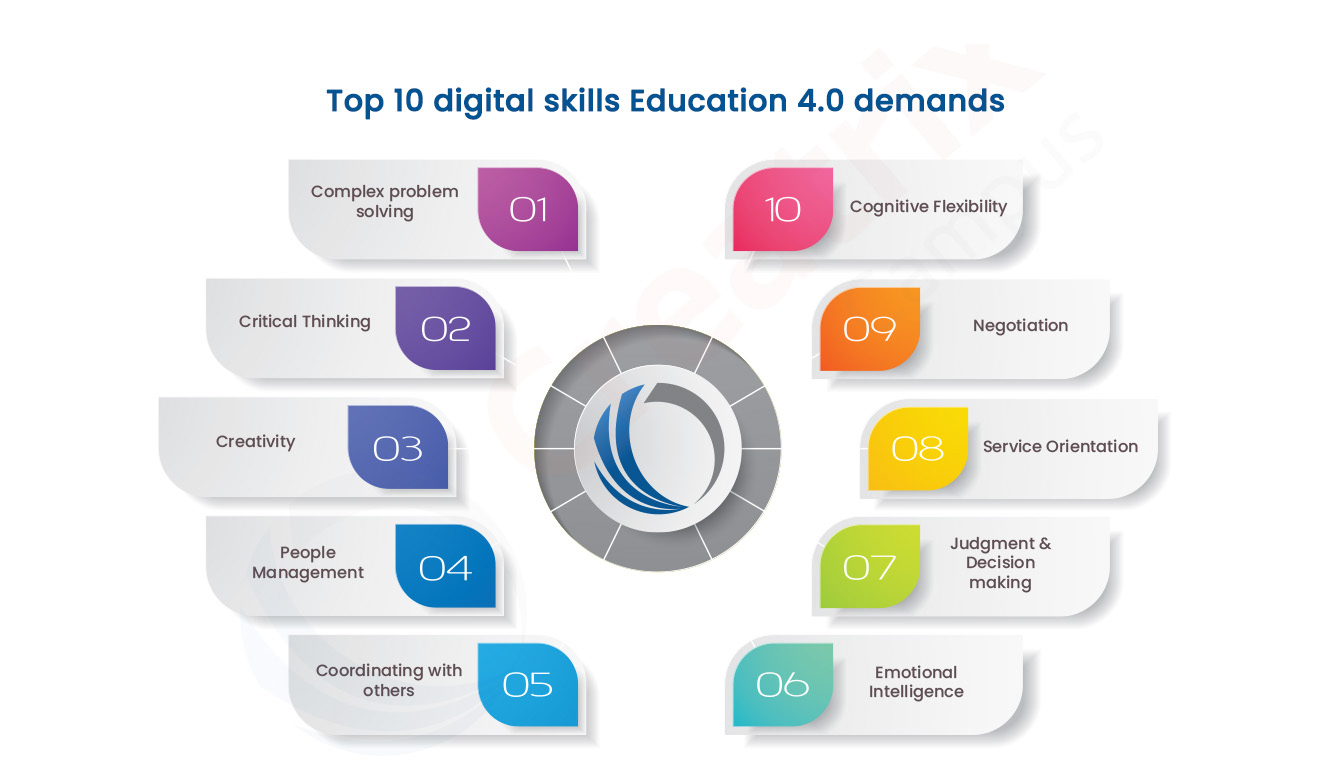
It is important to note that the job market is changing rapidly, and it is essential to continue training throughout life to adapt to new trends and job market needs.
Cross-disciplinary skills such as critical thinking, problem-solving, communication and collaboration will also be essential for success in the professions of the future.
A constantly changing career outlook
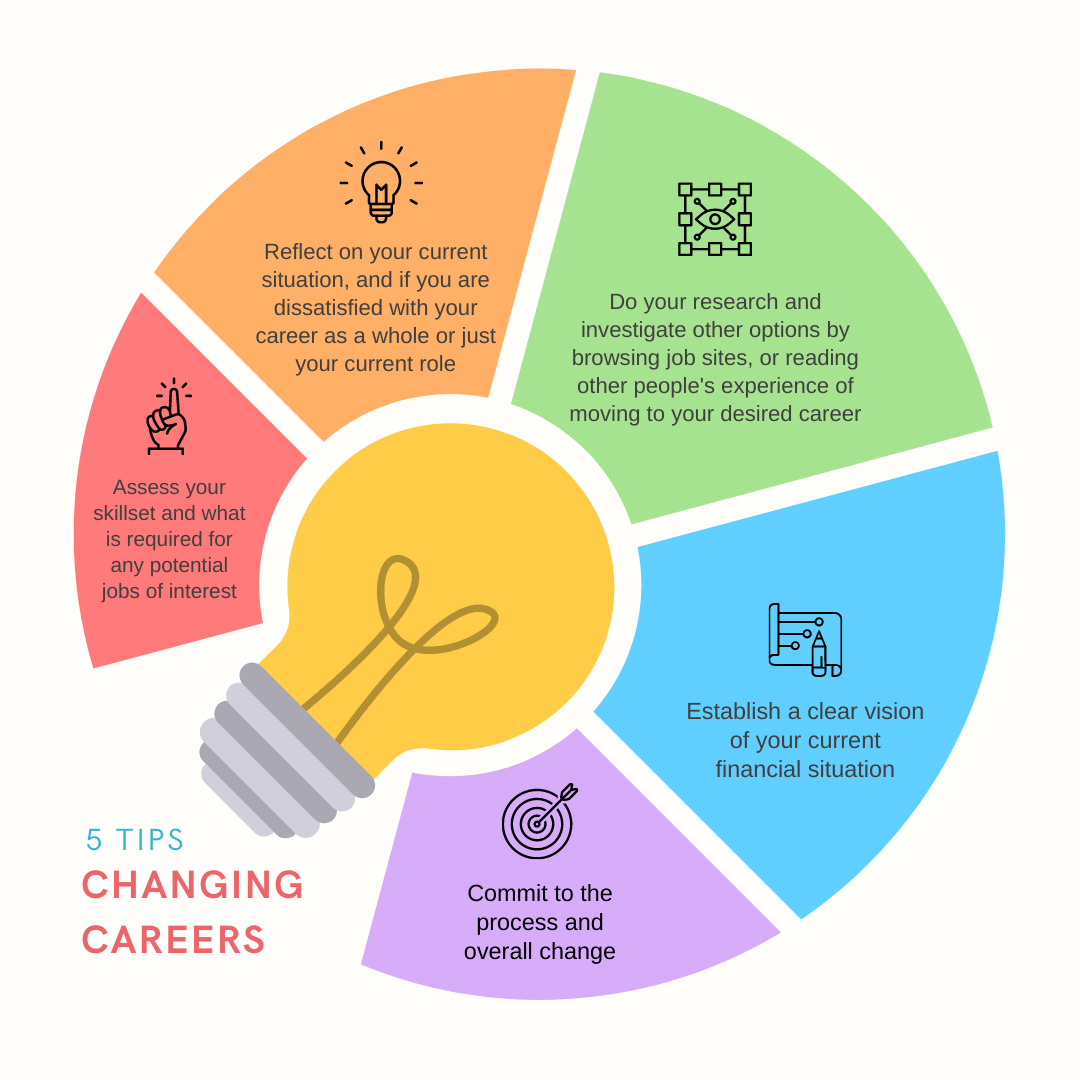
In an ever-changing world, it has become essential to constantly adapt the workforce to the needs of the industry. Technological advances, economic changes, new market trends and societal challenges create an environment of constant change. To remain competitive in the job market and thrive in one’s career, it is crucial for workers to constantly train and acquire new skills.
The training required in a career depends on the specific field and developments in the job market. However, certain cross-functional skills and training are often considered essential for adapting to industry needs:
Digital skills: With the increasing digitization of industries, it’s important to have solid digital skills, such as proficiency in IT tools, programming, data management and the use of new technologies.
Communication skills: The ability to communicate effectively, both orally and in writing, is essential in all careers. Clear and concise communication fosters collaboration and understanding between team members and stakeholders.
Problem-solving skills: Being able to identify and solve problems effectively is a valuable skill in any field. Critical thinking and creativity are also essential to finding innovative solutions.
Time management and organizational skills: The ability to manage time effectively, set priorities and meet deadlines is essential for maintaining productivity and achieving professional goals.
Leadership and management skills: For those aspiring to positions of responsibility and management, leadership, team management and decision-making skills are essential.
Interpersonal skills: Having strong interpersonal skills, such as empathy, tolerance, active listening and the ability to work as part of a team, is essential to creating a harmonious working environment and fostering positive relationships.
In a career, it’s also important to be open to lifelong learning opportunities, whether through professional training, development programs, certifications, online courses or continuing education. A constant learning mentality enables individuals to adapt to changes in their sector and improve their career prospects.
The 5 Most Important Job Skills For The Future
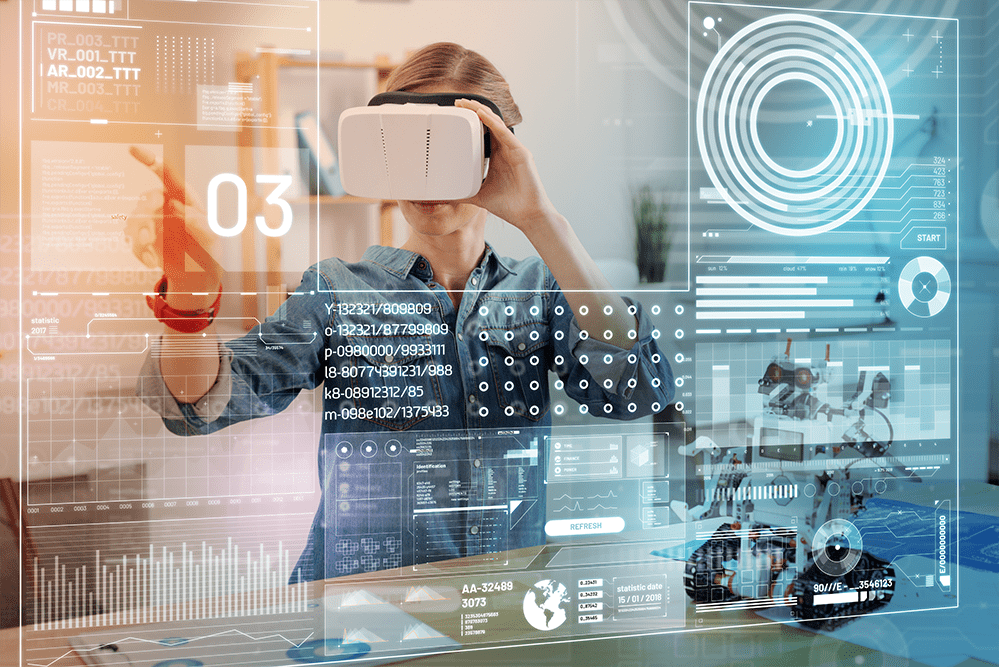
Top 5 Crucial Job Skills for the Future
- Emotional Intelligence
Emotional intelligence (EQ) has always been sought after by organizations, but its importance is continually growing.
EQ refers to our ability to understand and express our emotions, as well as comprehend the emotions of others.
Developing emotional intelligence is now a priority for everyone.
- Creativity
Human beings possess an incredible capacity for creativity, imagination, and innovation.
Creativity drives innovation, leading to economic growth.
Companies will increasingly seek creative employees who can offer fresh thinking and a competitive advantage.
It’s important to recognize that creativity extends beyond artistic skills and can be nurtured in anyone’s life.
- Flexibility and Adaptability
The job landscape is evolving, with fewer opportunities for lifelong careers.
Hence, individuals must continuously adapt and acquire new skills.
The half-life of skills is rapidly decreasing, making flexibility and adaptability crucial.
Being prepared to update skills every few years and embrace new approaches is vital for everyone.
- Data Literacy
Data fuels the 4th industrial revolution we are experiencing. Companies are inundated with data, but it is meaningless without individuals who possess data skills to extract insights and make informed decisions.
A data skills gap exists in the market, and while not everyone needs to be a data scientist, all professionals should be data literate.
Curiosity, asking « why, » and understanding how to use available data are essential steps to improve data literacy.
- Tech Savviness
Tech-savviness is a vital job skill for the future, given the convergence of major technology trends in the 4th industrial revolution.
Artificial intelligence, big data, extended reality, robotics, internet of things, 3D printing, and blockchain are reshaping our world.
Understanding these technologies, their rapid development, and their implications for businesses are essential for everyone.
Partners
INDIRÂH EVENTS & COMMUNICATION
BY INDIRA YANNI DOMINGO
THE AGENCY
Indirâh Events & Communication learns to know you and your customers for a good control of your goals, your vision and of course your needs.
INDIRÂH EVENTS & COMMUNICATION
Indirâh Events & Communication ensures to propose personalized solutions respecting the essence of your activity to reinforce your promotion while controlling your budget.
STUDIO 24 – 50 BRANCHES NATIONWIDE & 30 HEADQUARTERS
With over 50 branches nationwide. In this video, I will opportune to visit studio 30 headquarters in Lagos Nigeria. I toured the building and got insights on their business model.
Studio24 Nigeria Contact
www.achatorparisdiamond.fr
5 Rue chabrol, Paris, France
achatorparis.fr
Métro : Gare du Nord – Line 2 – Line 4 – Main Line Train – RER B to Charles de Gaulle Airport , RER D et RER E, TER Transilien Line H et line K and also the Bus 38, 39, 42, 43, 46, 48, 65, 302 et 350.
Instagram : https://www.instagram.com/achat_or_diamond/
Website : https://www.achatorparisdiamond.fr/
CAMERAMAN REPORTER TEAM by Charles JACKOTIN
MEDIA PARTNER:
Editorial: DNA – International
Photographer: Dan NGUYEN
Media : DN-A INTERNATIONAL
LINKS TO OUR ONLINE MAGAZINES :
Media : DN-AFRICA.COM
Location:


